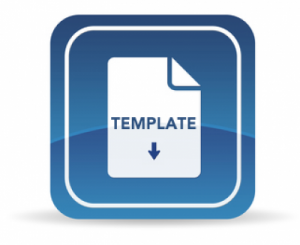PERBANDINGAN KADAR GULA DARAH PASIEN DI INSTALASI GAWAT DARURAT TERHADAP TINGKAT KEPARAHAN STROKE
DOI:
https://doi.org/10.22487/htj.v10i3.1258Abstract
Pendahuluan: Stroke merupakan salah satu penyebab utama kematian dan disabilitas di dunia. Penelitian sebelumnya menunjukkan bahwa hiperglikemia saat masuk IGD merupakan prediktor signifikan dari hasil fungsional jangka pendek yang buruk pada stroke iskemik akut. Tujuan penelitian ini adalah untuk mengetahui hubungan antara kadar gula darah sewaktu terhadap defisit neurologis berdasarkan NIHSS saat masuk IGD. Metode: Penelitian retrospektif melihat kadar gula darah pasien dengan stroke akut terhadap NIHSS saat masuk Instalasi Gawat Darurat (IGD). Penelitian dilakukan di Rumah Sakit Umum Daerah (RSUD) Dumai dan melibatkan 40 subjek penelitian. Uji korelasi dilakukan untuk melihat signfikansi dan korelasi antara kedua variabel, dimana p-value <0,05 dinyatakan sebagai signifkan berdasarkan uji statistik. Hasil: Rerata kadar gula darah pasien dalam penelitian ini adalah 195,1 ± 72,6 dan NIHSS adalah 16,7 ± 5,3. Penelitian ini menunjukkan terdapat korelasi yang cukup kuat dengan hubungan yang signifikan antara kadar gula darah sewaktu saat pasien masuk ke IGD terhadap NIHSS (r= 0,32, p= 0,44), tetapi korelasinya lemah dan memiliki hubungan yang tidak signifikan terhadap outcome (r= 0,08, p= 0,59). Kesimpulan: Terdapat hubungan antara KGDS terhadap NIHSS, tetapi tidak terhadap outcome.
References
Powers WJ. Acute ischemic stroke. N Engl J Med. 2020;383(3):252–260.
Awad I, Chireau M. Stroke Overview. Stroke. 2014;12(3):34–50.
Catalan Society of Neurology. Official Guidelines for diagnosis and treatment. In: Cerebrovascular Diseases. 2 ed. Societat Catalana de Neurologia; 2011.
Global, regional, and national burden of stroke, 1990-2016: a systematic analysis for the Global Burden of Disease Study 2016. Lancet Neurol. 2019;18(5):439–458. doi:10.1016/S1474-4422(19)30034-1
Donkor ES. Stroke in the century: a snapshot of the burden, epidemiology, and quality of life. Stroke Res Treat. 2018;2018.
Goldstein L, Bushnell C, Adams R, Al E. Guidelines for the primary prevention of stroke: a guideline for healthcare professionals from the American Heart Association/American Stroke Association. Stroke. 2011;42(2):517–584.
Louis E, Mayer S, Rowland L. Merritt’s neurology. Lippincott Williams & Wilkins; 2016.
Heldner M, Zubler CM, Schroth HP, et al. National institutes of health stroke scale score and vessel occlusion in 2152 patients with acute ischemic stroke. Stroke. 2013;44(4):1153–1157. doi:10.1161/STROKEAHA.111.000604
Suwito. Correlation between random blood glucose in admission with outcome clinical functional skale nihss on the acute ischemic stroke non diabetes mellitus. Univ Airlangga. Published online 2009.
Olsen TS, Ratan RR, Reding MJ, Al E. Clinical study: Higher blood glucose within the normal range is associated with more severe strokes. Stroke Res Treat. 2012;3(1):435–439.
Quinn TJ, Dawson J, Walters MR. Sugar and stroke: Cerebrovascular disease and blood glucose control. Cardiovasc Ther. 2011;29(6):31–42.
Hage V. The NIH stroke scale: a window into neurological status. Nurs Spectr. 2011;24(15):44–49.
Zöllner JP, Misselwitz B, Kaps M, et al. National Institutes of Health Stroke Scale (NIHSS) on admission predicts acute symptomatic seizure risk in ischemic stroke: a population-based study involving 135,117 cases. Sci Rep. 2020;10(1):3779.
Nardi K, Milia P, Eusebi P, et al. Predictive value of admission blood glucose level on short-term mortality in acute cerebral ischemia. Stroke Vasc Neurol. 2012;26(2):70–76.
Stead LG, Gilmore RM, Bellolio FM, et al. Hyperglycemia as an independent predictor of worse outcome in non-diabetic patients presenting with acute ischemic stroke. Neurocrit Care. 2009;10(2):191–196.
Poppe AY, Majumdar SR, Jeerakathil T, et al. Admission hyperglycemia predicts a worse outcome in stroke patients treated with intravenous thrombolysis. Diabetes Care. 2009;32:617–622.
Li WA; Moore LS; Chakraborty T; et al. Hyperglycemia in stroke and possible treatments. Neurol Res. 2013;35(5):479–491.
Nag C, Das K, Ghosh M, Khandakar MR. Prediction of Clinical Outcome in Acute Hemorrhagic Stroke from a Single CT Scan on Admission. N Am J Med Sci. 2012;4(10):463–467. doi:10.4103/1947-2714.101986
Namale G, Kamacooko O, Makhoba A, et al. Predictors of 30-day and 90-day mortality among hemorrhagic and ischemic stroke patients in urban Uganda: a prospective hospital-based cohort study. BMC Cardiovasc Disord. 2020;20(1):442. doi:10.1186/s12872-020-01724-6
Al-Weshahy A, El-Sherif R, Selim KAA, et al. Short term outcome of patients with hyperglycemia and acute stroke. Egypt J Crit Care Med. 2017;5(3):93–98.
Downloads
Published
How to Cite
Issue
Section
License
Copyright (c) 2024 Healthy Tadulako Journal (Jurnal Kesehatan Tadulako)

This work is licensed under a Creative Commons Attribution-NonCommercial-ShareAlike 4.0 International License.






